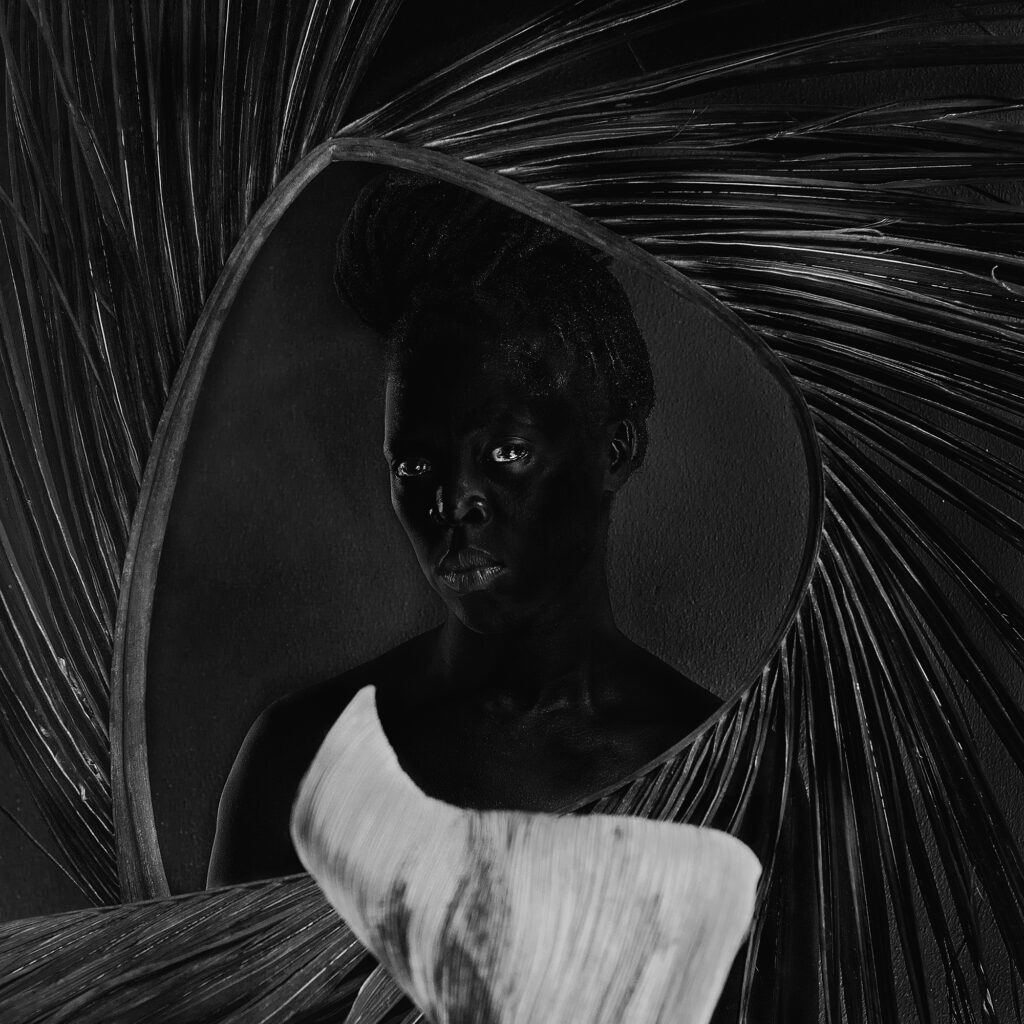
Paul Mpagi Sepuya’s Complex Explorations of Desire

# Paul Mpagi Sepuya’s *TRANCE*: A Reimagining of the Photographic Gaze
Photography has long been heralded as a medium that captures truth—a tool to document reality, preserve history, and immortalize moments. Yet, for contemporary artist Paul Mpagi Sepuya, photography is anything but straightforward. His latest exhibition, *TRANCE*, on display at Bortolami Gallery, challenges the inherent nature of photography by transforming it into a space of intimacy, fragmentation, and playful deception.
### **Photography as Fiction**
Rather than treating photography as a mere act of capturing reality, Sepuya constructs images that blur the boundaries between object, image, and viewer. His practice works within and against conventions of portraiture, creating layered compositions that simultaneously reveal and obscure. His photographs play with mirrors, reflections, and studio setups, offering glimpses into private spaces while maintaining an air of mystery.
For Sepuya, the photographic moment is not about freezing time but about engaging in a dynamic exchange between artist, subject, and viewer. This approach encourages audiences to question what they see and reconsider the way they interact with images.
### **The Power of Mirrors and Repetition**
At the entrance of *TRANCE*, visitors encounter *Studio Mirror Diptych (_DSF3596, _DSF3598)* (2024), a pair of large billboard-like structures that, instead of presenting images to passersby, face inward. These monumental works act like barriers, forcing viewers to navigate around them to glimpse what they contain—photographs of Sepuya’s own studio space, complete with mirrors, older works, and photographic equipment.
Mirrors play a crucial role in Sepuya’s work, acting as both a tool and a metaphor. They create visual confusion, challenge traditional notions of perspective, and disrupt the idea of a singular photographic truth. In *TRANCE*, mirrors fragment bodies and faces, rendering them incomplete or disjointed, emphasizing the constructed nature of images. Sepuya himself often appears fragmented in his photographs—only half of his body visible, or partially obscured by objects in the frame.
This theme of repetition extends throughout the exhibition, with works constantly referencing and reflecting one another. Sepuya creates a *mise en abyme* effect, where images fold into themselves, producing an infinite loop of meaning and interpretation.
### **Desire, Eroticism, and the Unseen**
Sepuya’s works frequently engage with themes of intimacy and eroticism. In *Night Studio Mirror (_DSF1073)*, the artist holds a piece of cloth in front of his midsection, seemingly guarding his nudity. However, a strategically placed mirror in the background reveals a portion of his bare body, teasing the viewer with an unintended—or perhaps deliberate—exposure. This tension between what is seen and unseen, revealed and concealed, is a recurring motif in Sepuya’s work.
Similarly, *Gallery Gazing Ball (DSCF1919)* features a young man gazing downward, resisting direct engagement with the camera. The composition plays with a reflective sphere in the foreground, creating an interplay of hidden and exposed elements. The positioning of objects, including phallic-shaped camera equipment, adds to the work’s exploration of desire, voyeurism, and the act of looking.
Sepuya’s approach aligns with psychoanalytic theories of desire, particularly Jacques Lacan’s concept of the unattainable object. In these images, sensuality is always just out of reach, leaving viewers in a state of perpetual longing.
### **Collapsing Time and Space**
In traditional portrait photography, the subject sits, the camera captures, and the photograph is later viewed as a completed product. Through his complex compositions, Sepuya disrupts this linear process. His works collapse time, incorporating images of past works within new compositions. Older portraits become props within newer images.
By making visible the process of creation, Sepuya invites viewers into an active engagement with the work. The subject and spectator frequently switch roles—the viewer looking at a mirror may suddenly realize they are being reflected, becoming part of the photograph itself. This fluidity between observer and observed adds another layer of complexity to *TRANCE*.
### **Conclusion: The Dazzling Illusions of Sepuya’s Photography**
Paul Mpagi Sepuya’s *TRANCE* is an invitation to reconsider the photographic medium—not as a passive recorder of reality but as an active, dynamic space for questioning identity, intimacy, and perception. His use of mirrors, repetition, and physical obfuscation challenges traditional representations and pushes viewers to engage deeply with the ways in which images construct reality.
Ultimately, Sepuya’s work reminds us that what we see in an image is never quite the full picture—and perhaps, the real thing isn’t even in the frame.
—
**Paul Mpagi Sepuya: *TRANCE*** is on view at Bortolami Gallery